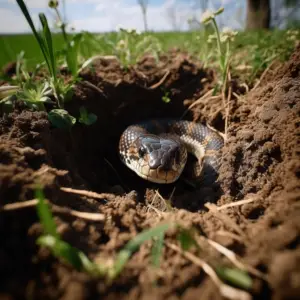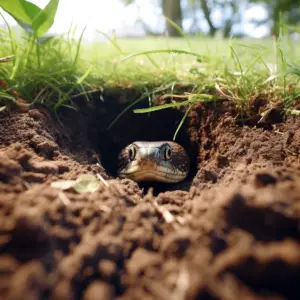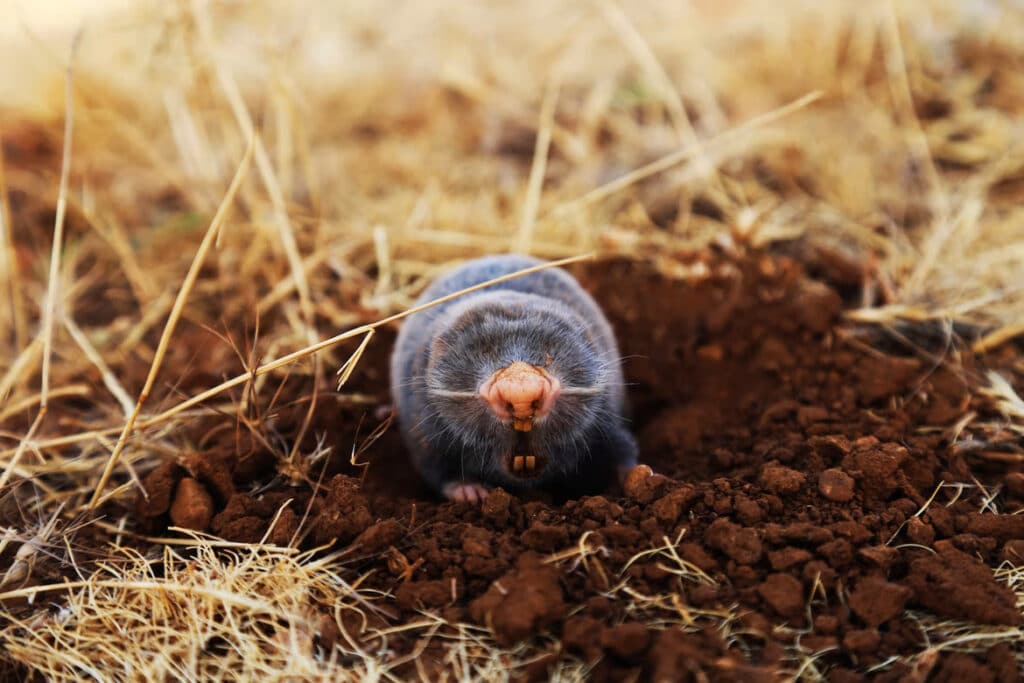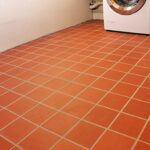Snake and Mole Holes are some of the world’s most feared creatures. They often hide in holes, especially during winter when trying to find a warm place to hibernate. But do snakes actually dig holes in the ground themselves? If so, how do they do that or how can you even identify one?
Well, we know that holes are a perfect nesting or hiding spot for wildlife in general and unsurprisingly snakes and rodents are no exceptions. This article seeks to explain the digging abilities of various species of snakes, and the connection between mole holes and snakes holes.
Table of Contents
Do Snakes Make Holes?

Some snakes do make holes in the ground and some don’t. It all comes down to whether they spend most of their time underground or above the ground in the wild. Snakes such as rat snakes and Garter snakes can make holes underground quite well.
Rat snakes, in particular not only make holes to hibernate but also use them for hunting. That said, the holes that most snakes live in are made by turtles, frogs, and other rodents.
So when you see holes in your garden, it doesn’t always mean that snakes live there. It simply means that certain wildlife is living there. However, as mentioned before snakes are known to take over holes that have been abandoned by other creatures, but they can too make the holes comfortable for their own hiding or nesting purposes.
In a simple way of saying, snakes don’t always build their own holes. One would even say they don’t have the strength and the ability to do so. They mostly make use of unoccupied areas of space.
That’s why it’s common to find them not only in holes but also under barks, under the rocks, and in hollows of trees. Not to mention that if snakes find an opening to your house and they find it dark and warm enough, they can nest there too.
Perhaps that’s why homeowners are advised to check openings or cracks in their properties to prevent any animals, bugs, or insects from entering the house.
Mole Holes vs Snake Holes
Generally speaking, snakes often occupy holes made by other creatures. While moles and chipmunks are usually the most common rodents known to make holes, there’s a key difference between the types of holes they dug.
Chipmunk holes are usually very small and neat, which makes them attractive to snakes. They are often a habitable width for snakes to take over once chipmunks have departed. These holes don’t have soil surrounding them and will look tidy and even.
On the other hand, mole holes are extremely different. Of course, the hole will still be there, but it will be surrounded by a mound of excavated dirt or soil.
These holes are made much more violently as opposed to those made by chipmunks. No matter how messy, though, mole holes are still a welcome spot for snakes.
While moles are ground-dwelling carnivores, they prefer to eat insects rather than garden plants. But their violent underground tunnels can ruin your lawn and backyard and make easy access to your plants and house for other animals, including snakes.
How to Keep Moles out of your backyard
If you’re experiencing some mole problems, one effective solution is trapping. This is arguably the only way to deter moles. You can use a human trap and release the bothersome creatures at least five miles from your backyard in a rural area for example.
Moles are carnivores and they make themselves at home in places rich in insects. That means when their food is seasoned with castor oil, for instance, they will seek some other place for means. So simply mix up three parts of castor oil with one part of dish detergent. Get four tablespoons of the concoction in a gallon of water and soak the holes and tunnels.
Another option is to place ultrasonic devices or noisemakers such as spinning daisies near the runs. This method is often effective.
Other than that, owning a cat that enjoys walking through your backyard and flower beds can also be an effective means to deter rodents.
Some sources suggest that it works to apply dried blood, powdered red pepper, tobacco, or coffee grounds near the mole holes. For better results, it’s better to reapply after a rain.
You may also consider using wind power. Set up the vibrations in the ground so that they bother moles and send them away. Suggested low-tech methods include pinwheels placed all over the lawn or area under mole domination.
Lastly, there are mole baits and repellents that you might want to consider. Bromethalin, for instance, is commercially available in form of warm-shaped bait. All you need to do is place it in an activity more run or hole. The ideal placement is crucial for this method to work.
How to Deal with Snake Holes

One way to deal with it is to leave it alone. Some folks may suggest trying to cover the holes with more soil or leaves, but this will only force the snake to burrow even more. Placing heavy items like plant pots in the holes will not work. The snake will simply find another way to escape.
Also, if you try to eliminate the hole by yourself, chances are you will encounter the snake and it can feel threatened. You might even get hurt during the process. Therefore, the most effective way to sort snake holes is to prevent them from occurring, and if they do, consider calling in professionals.
One of the preventive measures is to cover up all areas around the house in which the snake would hide. Make sure you clean any debris and litter vegetation from grassy areas. And do not leave trees, bushes, shrubs, or even grass to become overgrown.
Conclusion
Dealing with mole holes and snake holes in your lawn can be daunting at first. Even so, there are some effective ways to resolve this common problem, including leaving the holes alone. Not all snakes are harmless, so you might want to keep that in mind before executing your move.


